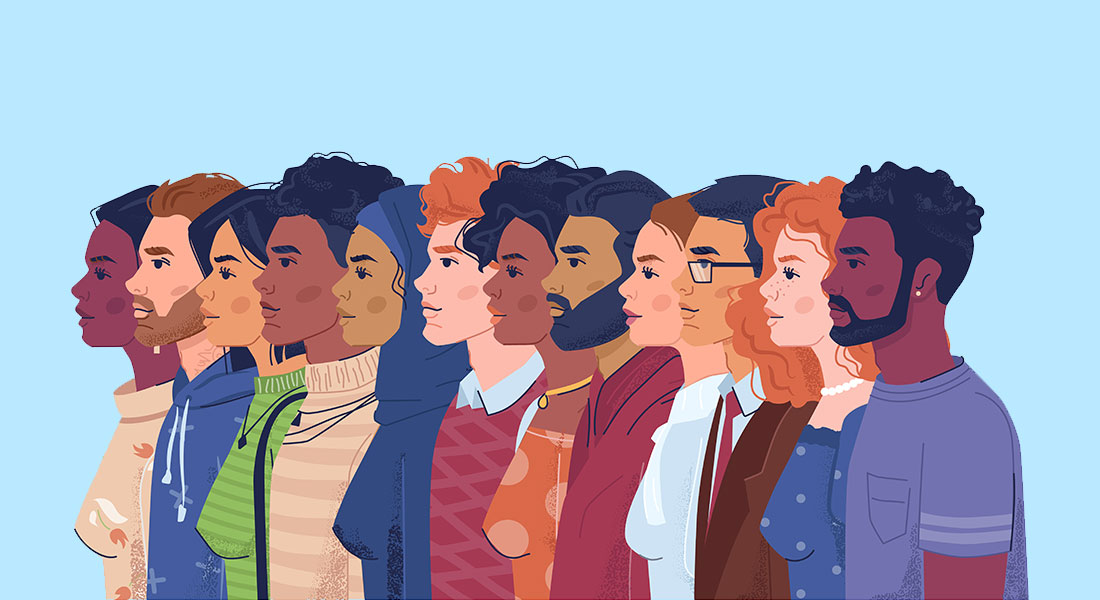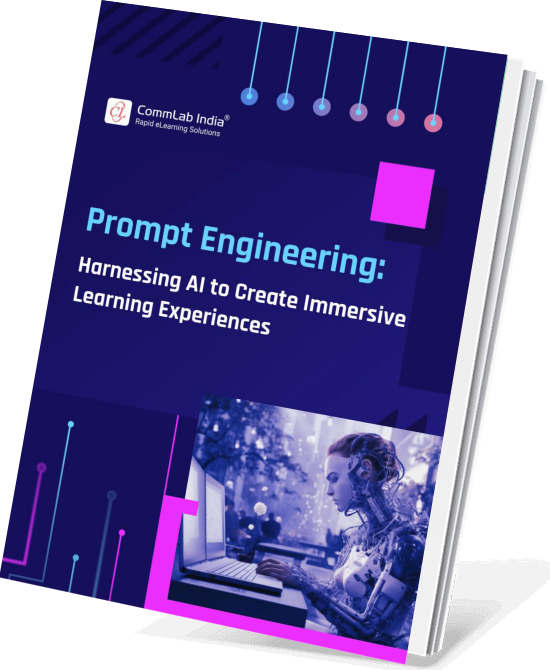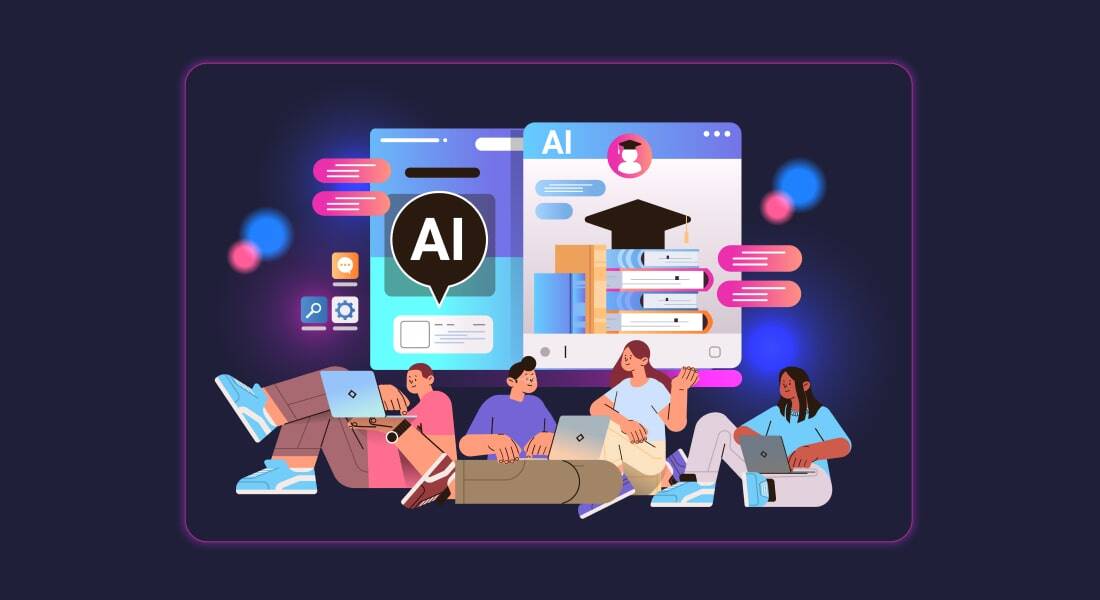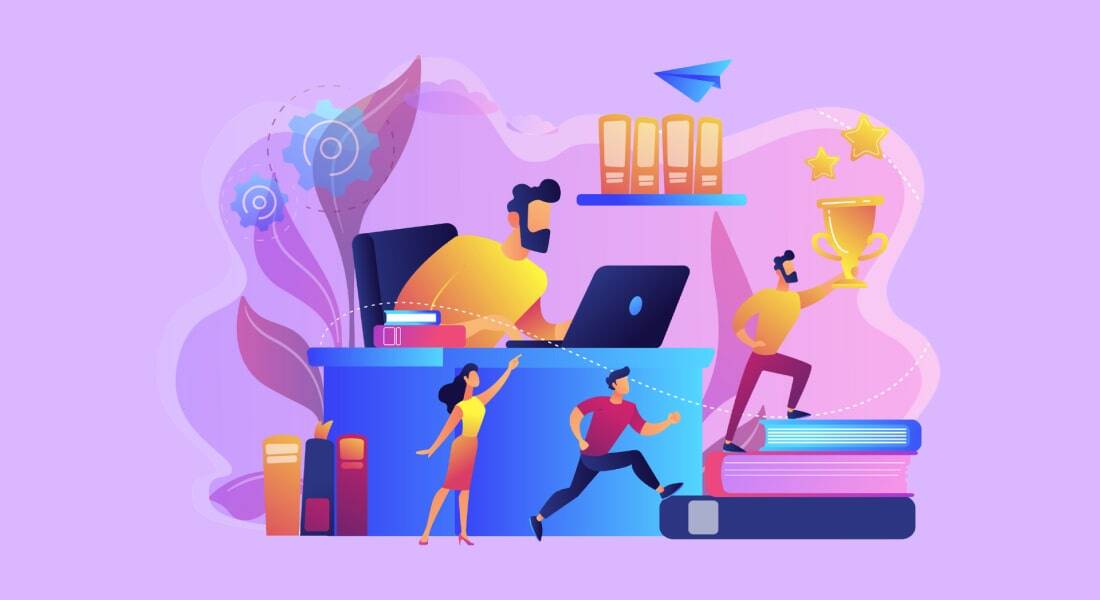How to Create Inclusive Custom eLearning for A Diverse Workforce?

In today’s rapidly evolving business landscape, companies are recognizing the value of diversity and inclusion in their workforce. A diverse employee base brings fresh perspectives, innovation, and improved problem-solving abilities. However, it also poses challenges for corporate training as organizations must cater to the unique needs and preferences of their diverse learners. This is where the power of inclusive custom eLearning comes into play, enabling companies to break down barriers and create a more supportive, engaging, and effective learning environment for all employees.
→ Download Now: Prompt Engineering for L&D Professionals!
Table of Contents
- What Is a Diverse Workforce?
- How to Design Custom eLearning for Inclusivity?
- How to Address the Learning Style Diversity in Custom eLearning?
- How to Create Multilingual Custom eLearning Solutions?
- How to Ensure Accessibility in Custom eLearning Development?
- How to Incorporate Empathy and Cultural Sensitivity in Custom eLearning Experiences?
- How to Measure the Impact and Success of Custom eLearning Programs?
- What Is the Future of Inclusive Custom eLearning?
Have You Implemented Inclusive Custom eLearning for Diverse Workforces Yet?
Inclusive custom eLearning is a necessity for organizations aiming to maximize their employees’ potential. By embracing the power of custom eLearning, organizations can break down barriers, bridge gaps, and create a unified workforce that thrives on a culture of continuous learning and inclusion. Explore the key aspects to make your training sessions inclusive and impactful.
What Is a Diverse Workforce?
A diverse workforce is one that comprises individuals from various cultural backgrounds, age groups, languages, physical abilities, and cognitive styles. In such a multifaceted setting, a one-size-fits-all training approach falls short of meeting the learning needs of each employee. Acknowledging these differences and providing personalized learning experiences are essential to ensure that every individual can reach their full potential and contribute meaningfully to the organization.

Prompt Engineering — Harnessing AI to Create Immersive Learning Experiences
Learn the Art of Crafting Effective Prompts and Get Desired Outcomes
- What is Prompt Engineering?
- Why is Prompt Engineering Important?
- How to Craft Effective Prompts?
- And More!
How to Design Custom eLearning for Inclusivity?
Off-the-shelf training solutions often lack the flexibility needed to address the unique challenges of diverse workforces. Custom eLearning development allows organizations to tailor learning content, delivery methods, and assessments to suit the specific requirements of their employees. By doing so, companies can foster a culture of inclusivity, making each employee feel valued and respected, and ultimately enhancing the overall training experience.
How to Address the Learning Style Diversity in Custom eLearning?
One of the critical aspects of inclusive custom eLearning is acknowledging and addressing the diversity of learning styles among employees. Majorly, there are 3 different types of learners, they are –
1. Visual learners
They grasp information more effectively through images, infographics, and videos. By incorporating multimedia elements into the eLearning modules, companies can enhance comprehension and retention for this group. Most of the basic digital learning strategies work really well for these visual learners so if your organization has a majority of visual learners, you can opt for digital learning techniques such as microlearning and video-based learning.

2. Auditory learners
They prefer content delivered through sound and narration. Custom eLearning can accommodate their preferences by providing audio-based content and narrated instructions. This auditory reinforcement helps them absorb information better and stay engaged throughout the training. Podcasts and audiobooks can be considered the best medium for them to learn anything.
3. Kinesthetic learners
They thrive on hands-on experiences, interactive simulations, and practical exercises that prove to be invaluable. Custom eLearning developers can create interactive scenarios that encourage active participation, enabling kinesthetic learners to apply their knowledge in real-life situations. Game-based learning can also be highly beneficial if your workforce majorly consists of GenZ employees.

Prompt Engineering — Harnessing AI to Create Immersive Learning Experiences
Learn the Art of Crafting Effective Prompts and Get Desired Outcomes
- What is Prompt Engineering?
- Why is Prompt Engineering Important?
- How to Craft Effective Prompts?
- And More!
How to Create Multilingual Custom eLearning Solutions?
In today’s globalized world, many organizations have international offices and employees from various linguistic backgrounds. Language barriers can pose significant challenges to training effectiveness and employee engagement. Inclusive custom eLearning can overcome this obstacle by offering multilingual training solutions.
By translating eLearning content into multiple languages, companies ensure that learners can access training materials in their native tongues. This approach not only improves comprehension but also fosters a sense of inclusivity and appreciation for diverse cultures within the organization.

How to Ensure Accessibility in Custom eLearning Development?
Inclusivity in custom eLearning goes beyond catering to different learning styles and languages. It also entails creating content that is accessible to employees with disabilities. Web Content Accessibility Guidelines (WCAG) serve as a comprehensive set of standards for making online content more accessible to individuals with visual, auditory, motor, and cognitive impairments.
Organizations investing in inclusive custom eLearning ensure that their learning management systems (LMS) and eLearning modules comply with WCAG guidelines. This ensures that employees with disabilities can access and navigate the training materials using various assistive technologies, making learning accessible to all.

Prompt Engineering — Harnessing AI to Create Immersive Learning Experiences
Learn the Art of Crafting Effective Prompts and Get Desired Outcomes
- What is Prompt Engineering?
- Why is Prompt Engineering Important?
- How to Craft Effective Prompts?
- And More!
How to Incorporate Empathy and Cultural Sensitivity in Custom eLearning Experiences?
Creating an inclusive eLearning environment requires an empathetic and culturally sensitive approach. It’s crucial for instructional designers and content developers to recognize and respect cultural differences and customize the eLearning content accordingly.
For example, using culturally diverse images, scenarios, and examples in the eLearning content helps learners from different backgrounds connect with the material. Avoiding cultural stereotypes and promoting cultural awareness fosters a positive and supportive learning experience for all employees.
How to Measure the Impact and Success of Custom eLearning Programs?
To ensure the success of inclusive custom eLearning initiatives, organizations must collect and analyze feedback from learners. Surveys, quizzes, and assessments can gauge learners’ satisfaction, engagement, and understanding of the training content.
Analyzing data on completion rates and performance metrics also provides valuable insights. Identifying trends and areas for improvement allows organizations to continuously enhance the inclusivity and effectiveness of their eLearning programs.
What Is the Future of Inclusive Custom eLearning?
As technology advances, the potential for creating inclusive eLearning experiences will only expand. Virtual Reality (VR) and Augmented Reality (AR) technologies, for instance, offer new opportunities for immersive and accessible training experiences.
Additionally, Artificial Intelligence (AI) can help personalize learning paths based on individual preferences and learning styles. With AI-driven adaptive learning, custom eLearning can dynamically adjust the content and pace to suit each employee’s needs, making training even more effective and inclusive.
Parting Thoughts!
Inclusive custom eLearning is not merely a buzzword; it is a strategic imperative for organizations committed to harnessing the full potential of their diverse workforce. By embracing the power of custom eLearning tailored to individual needs, organizations can break down barriers and create a unified workforce that thrives on a culture of continuous learning and inclusion. As technology continues to advance, the role of AI in L&D is becoming even more prominent. Check out our eBook on prompt engineering for L&D professionals. It will help craft relevant, clear prompts to attain useful responses from AI tools. Download now!
Editor’s note: This post was originally published on August 04, 2023 and has been updated for comprehensiveness.



![Unlocking Custom eLearning Excellence with the Right Tool [Infographic]](https://blog.commlabindia.com/hubfs/blogs/custom-elearning-tool-selection-infographic.jpg)

